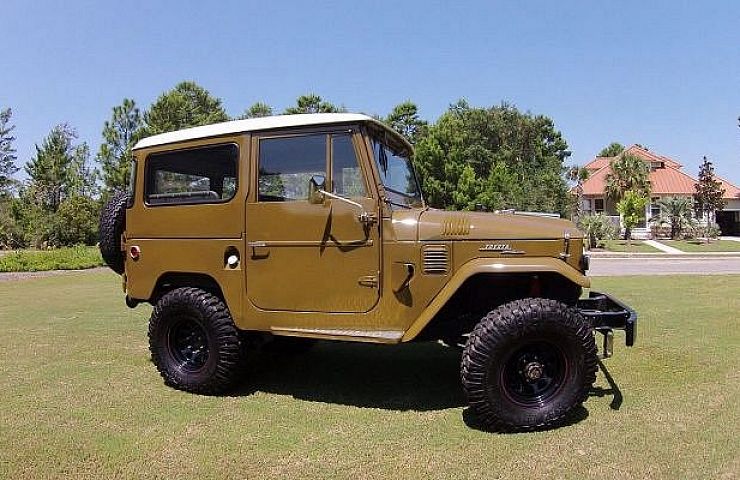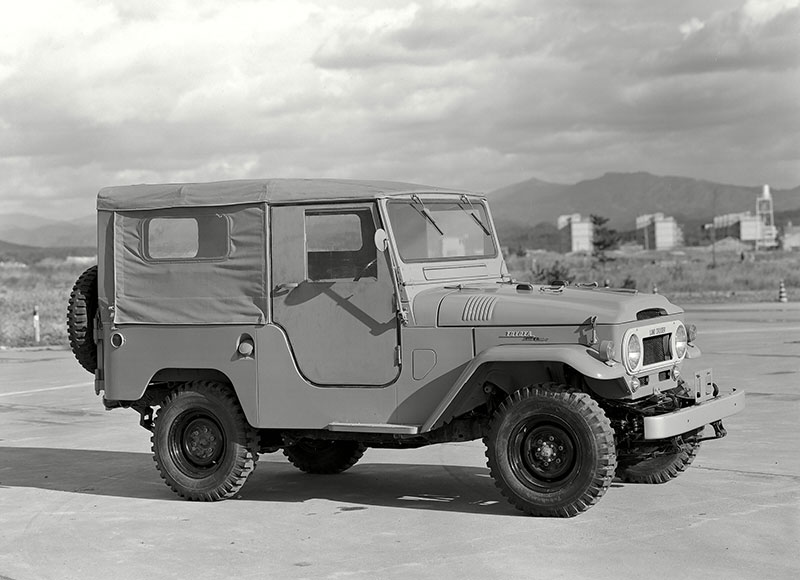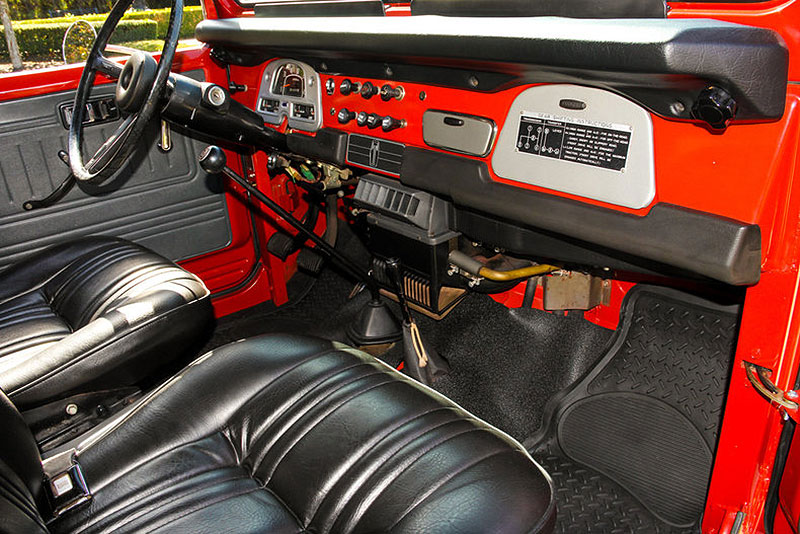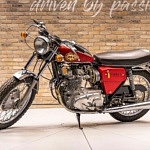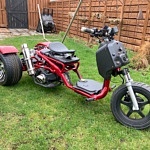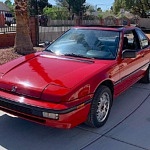Of all the vehicles Toyota built in the past 60 years, the FJ40 is perhaps the most iconic. Simple, sturdy, and ready for whatever roads might come its way, Toyota’s two-door 4X4 is the essence of adventure: a pioneering vehicle that never goes out of style.
Launching Toyota
To describe the FJ as Toyota’s answer to the Jeep is a disservice. It’s the vehicle that launched Toyota as a global brand. Although it wasn’t the first Toyota to come to the US—that honor goes to the 1957 Toyopet Crown Tiara—the FJ was arguably its first salable model.
Within a year of opening its US first dealership in Southern California, Toyota realized that the Toyopet was woefully underpowered for our roads: incapable of summiting the San Gorgonio Pass between Los Angeles and Palm Springs. They took the Toyopet off the market and dealers bought back the cars they’d sold.
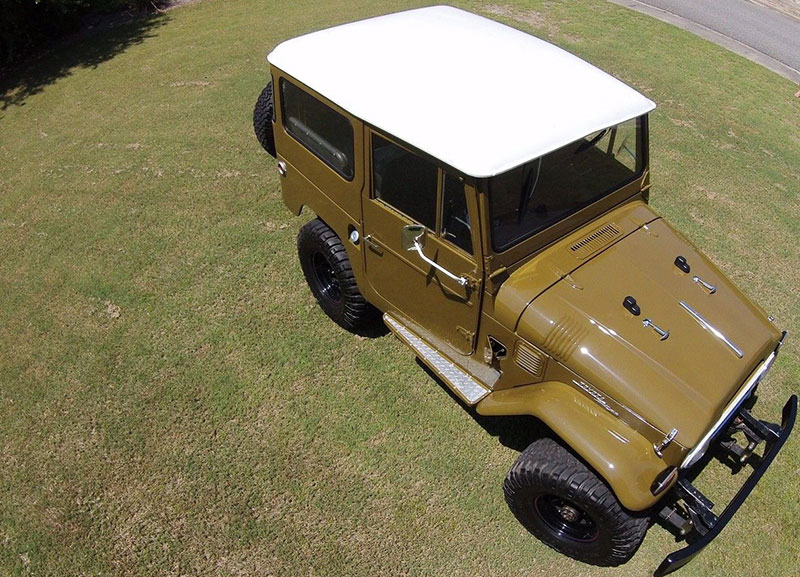
This 1967 Toyota FJ40 Landcruiser, with 60,000 original miles, is listed now on eBay for $14,000.
That left dealerships with the Land Cruiser to sink or swim. Fortunately the FJ 40, with its 125 horsepower engine and durable ladder frame met the buying public’s needs. Toyota sold the model globally for decades, moving 300,000 units by 1973.
Birth of the FJ40
Land Cruiser’s roots are in the Toyota BJ: a 4X4 introduced at the start of the Korean War. Japan’s National Police Reserve forces required an amphibious vehicle to use in combat, and worried about the number of American-built Jeeps it could procure. Toyota, having barely survived a large-scale strike following US-imposed economic stabilization after World War II, saw the commission as an opportunity to rebuild.
The prototype rolled out in 1951, with full-scale production following two years later. Toyota called it the BJ due to its B-Type six-cylinder engine and Jeep-style design. To prove its mettle, test driver Ichiro Taira drove the BJ up Mount Fuji reaching the sixth of 10 stations. Toyota’s Jeep became the patrol car for the National Police Agency. Responding to a trademark violation charge from Willys-Overland, Toyota renamed the truck the Land Cruiser.
By 1955, Toyota had replaced the 75-horsepower B engine with a more powerful gasoline block: the original F. In 1960, the 40 Series replaced the FJ20 that had come to the US two years prior.
Styling was similar, but the FJ40 was a more solid truck thanks to improvements in production techniques. The transfer case now included a low range that made the FJ better suited for unimproved roads. Engineers moved the truck’s three-speed shift lever to the steering wheel so three people could sit up front.
The 40-Series designation refers to the shortest wheelbase version of the FJ. Toyota also produced middle and long wheelbase versions called the FJ43 and FJ45 respectively. In 1974 Toyota introduced a diesel version called the BJ, but that car didn’t come to the US.
A Collectible 4X4
FJ40s continue to be popular collector cars due in part to the truck’s motorsports heritage: an almost-stock model won the 1974 Baja 1000, modified to use propane instead of gasoline as fuel.
Widespread parts availability through Toyota’s dealer network is also appealing. Prices range from about $25,000 for a rough but drivable vehicle to $75,000 or more for a fully restored truck.
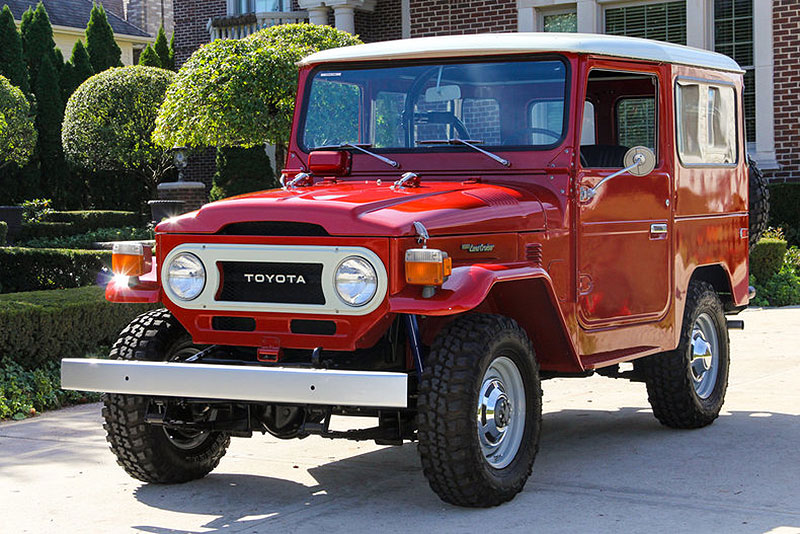
This gorgeous fully restored 1975 Toyota Land Cruiser FJ-40, with a Toyota 2F 4.2L Straight 6, has an asking price of nearly $70,000.
Because the FJ has been off the market for several decades, there are no legal restrictions on selling non-US market cars here. This can be a good or bad thing: good if you are looking for one of those rare diesels, but bad if you end up with certain models built under Toyota license but not with Toyota parts.
Paul Williamsen, Lexus national manager for strategic educational support and a FJ owner, recommends that buyers look for a mid-1970s model for best drivability.
“I wouldn’t recommend buying an FJ with the first F engine except as a museum piece or if you know the person selling it and how the car was maintained. The engine didn’t suffer well,” he said. “The 2F engine introduced in 1974 was more robust, with seven bearings, a higher compression ratio, better water and oil pumps and an upgraded high efficiency starter.”
About the same time, Toyota replaced its three-speed manual transmission with a four-speed gearbox. Two years later front disc brakes became standard on all US models.
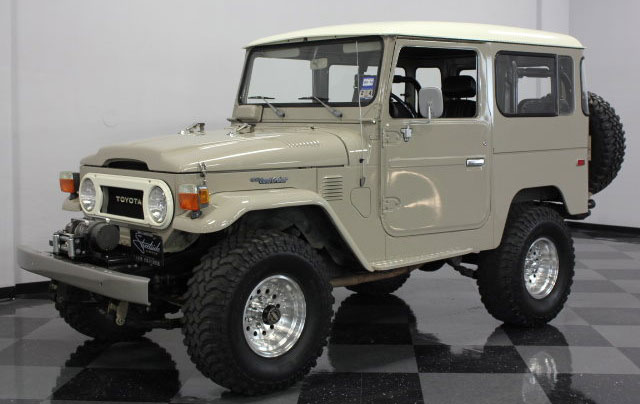
The seller of this clean 1978 FJ40 warns: “How high will the Toyota FJ go? Records keep getting broken at auctions.”
Rust is a problem for any FJ that hasn’t spent most of its life in the desert southwest. It’s most obvious on the rear quarter panels, but check under the car for the cargo floor and areas under the foot wells. Body panels can be replaced but rust on the frame itself is a deal breaker.
It’s not uncommon for collectors owning early models to swap out the original F engines for 2F blocks. According to Williamson, the job requires some rewiring and plumbing, but it’s a feasible task in a well-equipped garage. Another popular option is to swap out the original engine and transmission for a Chevrolet small block and gearbox. While the 2F engine upgrade is perfectly acceptable, be warned, installing a Chevrolet block pretty much negates the value of the car.
See Toyota Land Cruiser 4WD Cars & Trucks for sale on eBay.

